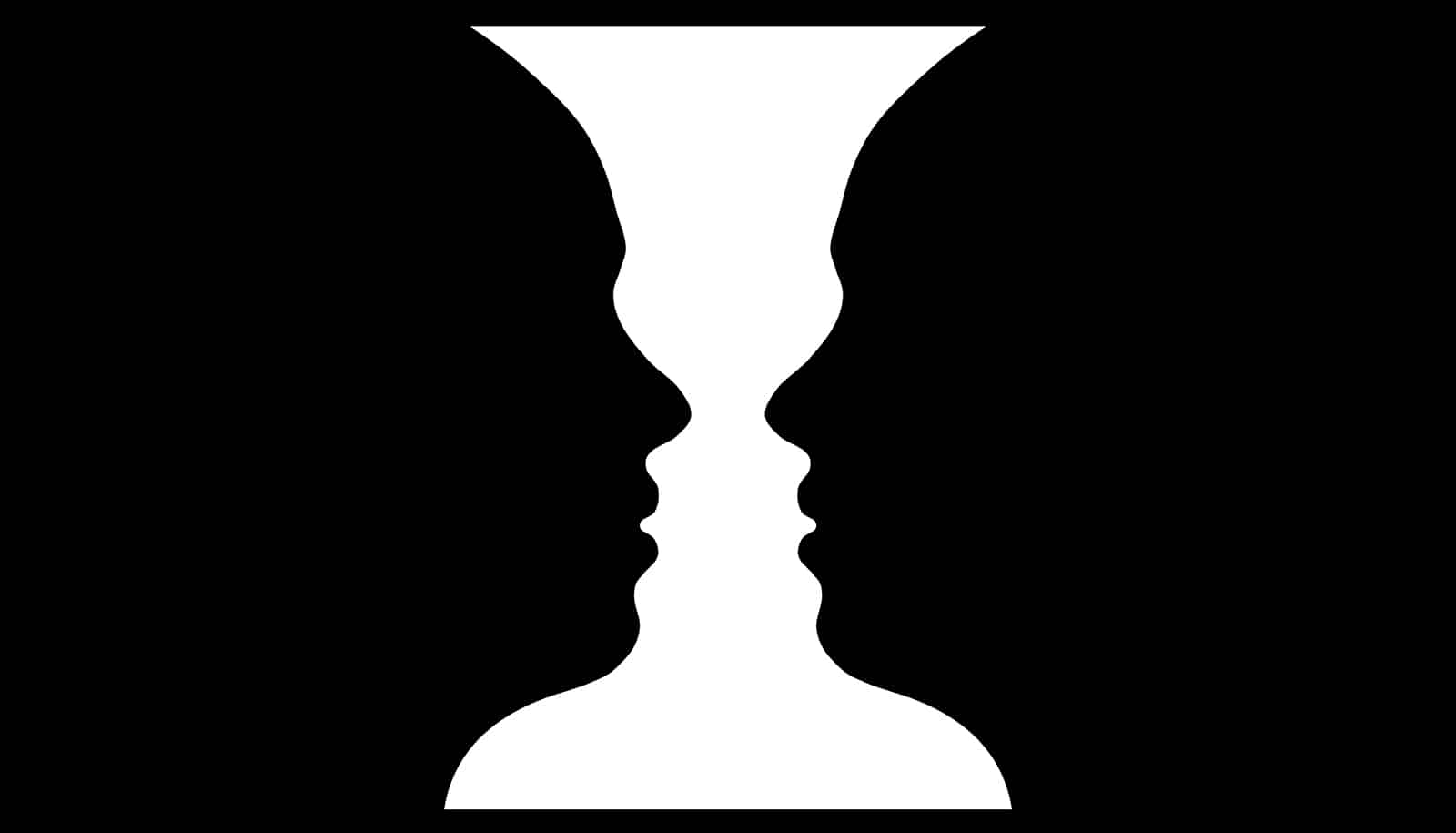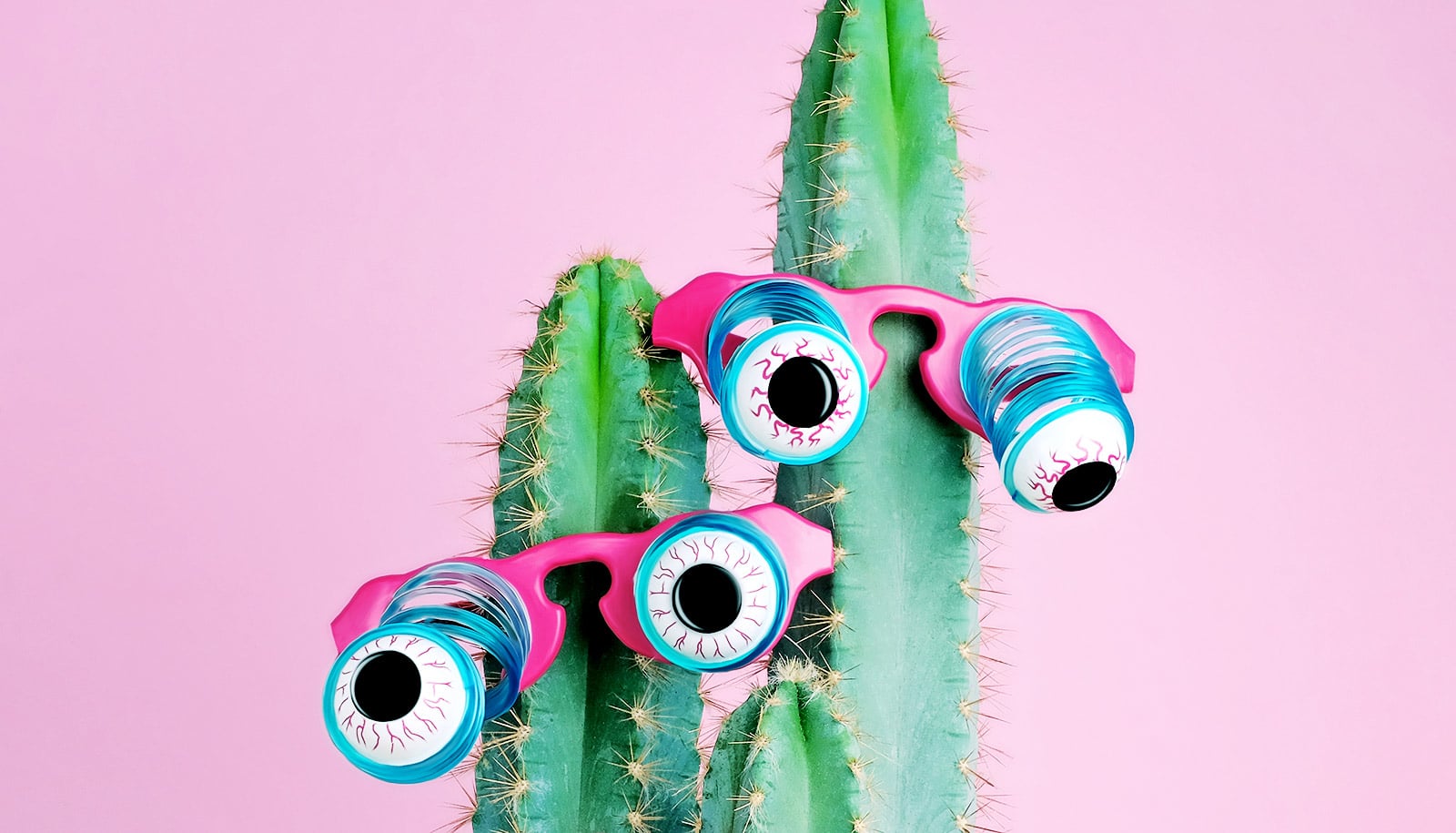Children with autism may perceive illusions differently than neurotypical children do, research finds.
You may have seen the image above before. It’s black and white and has two silhouettes facing one another. Or maybe you see the white vase with a black background. But now, you likely see both.
It is an example of a visual illusion that reminds us to consider what we did not see at first glance, what we may not be able to see, or what our experience has taught us to know—there is always more to the picture or maybe even a different image to consider altogether.
Researchers are finding the process in our brain that allows us to see these visual distinctions may not be happening the same way in the brains of children with autism spectrum disorder. They may be seeing these illusions differently.
“How our brain puts together pieces of an object or visual scene is important in helping us interact with our environments,” says Emily Knight, assistant professor of neuroscience and pediatrics at the University of Rochester Medical Center, and first author of a study in the Journal of Neuroscience. “When we view an object or picture, our brains use processes that consider our experience and contextual information to help anticipate sensory inputs, address ambiguity, and fill in the missing information.”
Knight and fellow neuroscience researchers in the Frederick J. and Marion A. Schindler Cognitive Neurophysiology Laboratory at the Del Monte Institute for Neuroscience used visual illusions—groups of Pac-Man-shaped images that create the illusion of a shape in the empty space.
They worked with 60 children ages 7 to 17 with and without autism. Using electroencephalography (EEG)—a non-invasive neuroimaging technique that allows researchers to record the response of neurons in the brain—researchers revealed that children with autism did not automatically process the illusory shapes as well as children without autism. It suggests that something is going awry in the feedback processing pathways in their brain.
“This tells us that these children may not be able to do the same predicting and filling in of missing visual information as their peers,” Knight says. “We now need to understand how this may relate to the atypical visual sensory behaviors we see in some children on the autism spectrum.”
Knight’s past research, published in Molecular Autism, found that children with autism may not be able to see or process body language like their peers, especially when distracted by something else. The kids in this study watched videos of dots that moved to represent a person. As part of the experiment, the dots changed color. Unlike in typical development, the brains of children with autism did not appear to notice the human movement when told to focus on the color. They had to pay specific attention to the human movement for their brains to process it well.
“We also need to continue this work with people on the autism spectrum who have a wider range of verbal and cognitive abilities and with other diagnoses such as ADHD,” Knight says. “Continuing to use these neuroscientific tools, we hope to understand better how people with autism see the world so that we can find new ways to support children and adults on the autism spectrum.”
Additional authors of the paper are from the University of Rochester, the Albert Einstein College of Medicine, and the University of Michigan. This research had support from the Kilian J. and Caroline F. Schmitt Foundation through Del Monte Institute for Neuroscience Pilot Program.
Source: University of Rochester


